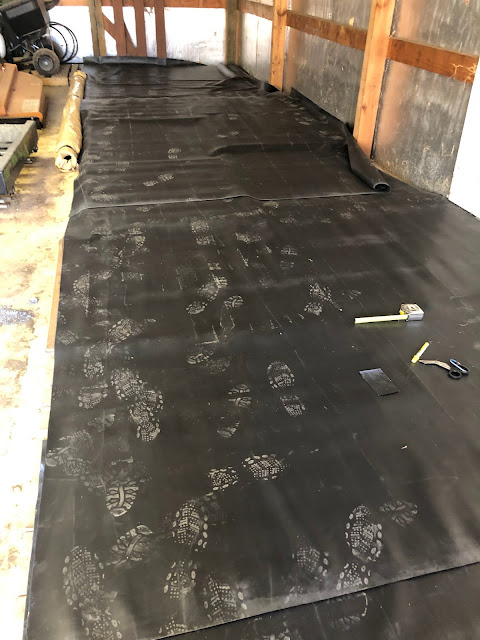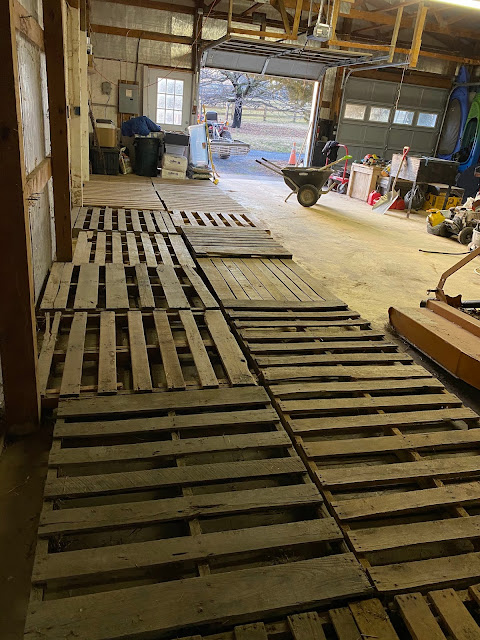I'm lucky to have a large area for hay storage, but I've had issues with the bottom layer of hay turning a bit moldy even though I store it on pallets to keep it off the concrete floor. This spring on a COTH thread I learned about using EPDM roofing material as a moisture barrier for hay storage. Unlike rubber stall mats, which in my experience can "sweat" on humid days, EPDM is specifically designed as a moisture barrier so it should buffer hay from ground dampness. Covering a large space with EPDM should also cost a lot less and require a lot less muscle than covering the same space with rubber mats.
When we had the roof replaced on our house, I was able to get a full roll of 12' EPDM from the roofing company for a pretty reasonable cost ($300). If you are patient and willing to call around, you might be able to find used or scrap EPDM for free or cheap, but I wanted to get it done soon before I restocked my hay supply.
When my hay supply ran low and I could reasonably move the remainder elsewhere, my wonderful niece and I lifted all of the pallets and swept out all the old chaff and dust and cobwebs. This was a deeply unpleasant task due to the dust and other allergens. We also found a disgusting pile of possible rat poop under one of the pallets. Face masks were a must!
 |
| This doesn't look too awful pre-cleaning, but the space between the pallets is full of chaff, dust, cobwebs, and spiders. |
 |
| With the pallets thoroughly cleaned, you can see the shocking amount of dust and chaff that had been hiding underneath them. So glad to get that out of there! |
 |
| Of course there was one spot where I had to trim a pallet to get it to fit around a beam, and then cobble some scrap wood on to make it pallet-like again. |
 |
| Then we unrolled the EPDM over the pallets, allowing plenty of overlap. |
 |
| I trimmed the EPDM to fit it neatly around the beams. This stuff is not thick at all so trimming just requires a pair of scissors. |
In theory the EPDM can go directly on the concrete with no need for pallets. I was too nervous to do that at first but I think I will get brave and remove the pallets before my next hay delivery. Pallets are not so fun to walk across when they're covered so you can't see the slats, even if you orient the slats in the same direction. I manage fine but I worry about someone else (husband, hay delivery guys) getting injured. Unlike stall mats, EPDM is extremely thin so it won't support your weight or stop you from turning an ankle in a gap between pallet slats.
About 8 months later, I haven't had any moldy bottom bales so the EPDM seems to be doing its job! It's also much, much easier to sweep out chaff and keep the area clean now that stuff can't fall down through the pallets. Cleaning the hay storage area can just be a minor maintenance chore instead of an annual sneeze-fest.





























